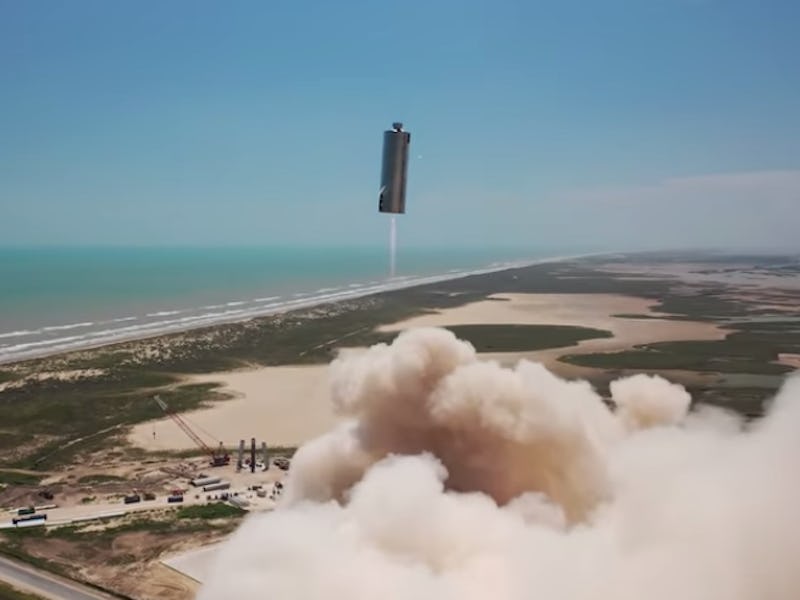Starship: Watch SpaceX nail 6th test launch
After Starship SN6, here's what to expect from future tests.

SpaceX’s march towards a fully-operational Starship continues in leaps and bounds — or in this case, hops.
On September 3rd, the rocket company’s Starship SN6 prototype did a successful ‘hop,’ as the company calls its tests, flying a little above 492 feet (150 meters) into the air.
The test represents a leap forward for Starship. With exciting developments ahead, the success of this test means SpaceX can push on with its ambitious program for the rocket it hops will one day transport humans to Mars.
In case you missed it, you can watch the launch here:
The test took place at SpaceX’s Texas development facility. That’s where Elon Musk unveiled the company's first-ever Starship prototype, the Mk.1, in 2019, and where another Starship prototype, the SN5, flew in August 2020.
Musk noted on Twitter that the SN6, flew a “similar hop to SN5, but it was a much smoother & faster operation.”
Referencing the SN6’s odd shape, which resembled a barn silo more than a rocket, Musk added that it “turns out you can make anything fly.”
Like the SN5 (the SNs stand for “Serial Number”), the SN6 is around 100 feet tall and is made out of stainless steel. Both are powered by a single Raptor engine, which in August hit a landmark of its own, reaching 330 bar of chamber pressure without exploding.
The SN6 launch took place with less fanfare than the SN5. That test, the first of its kind, had Musk announcing that it made Mars look “real.”
But replicability is just as important as getting the first go right. The company is known for its reuse its Falcon 9 rockets, and it wants to continue the practice with the increasingly ambitious Starship. When ready, Musk expects the ship to be able to carry 100 people or 150 tons worth of supplies into space.
That’s why, after post-hop processing, both SN5 and SN6 will have at least one more future test launch.
The company is also moving forward with a variety of other SN tests of specific aspects of what will become the overall Starship design.
There’s the SN7.1, for example, which is meant to be a “test tank” that will be pushed with pressure tests and three simulated Raptor engines to see how the rocket would fare during an eventual launch. The first SN7 intentional failure occurred in June. By definition, these “built to destroy” tests cannot reuse parts, but the data gained in learned how the rockets could fail is invaluable and will feature into future designs.
Then will come the Starship SN8 and SN9, which could show the project evolve. These later tests will up the ante, to three Raptor engines and a nose cone (where all the people would be), ending the short reign of barn silo designs as the most advanced in rocketry.
With their added power, it’s expected that the SN8 and SN9 will surpass the SN5 and SN6, but the details of their launches are currently unknown. Watch this space.
This article was originally published on